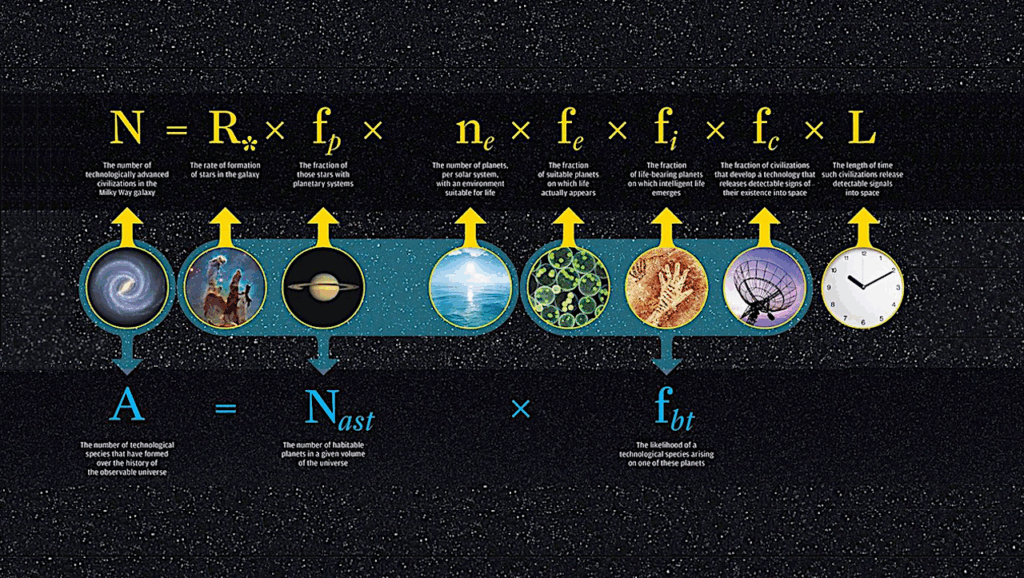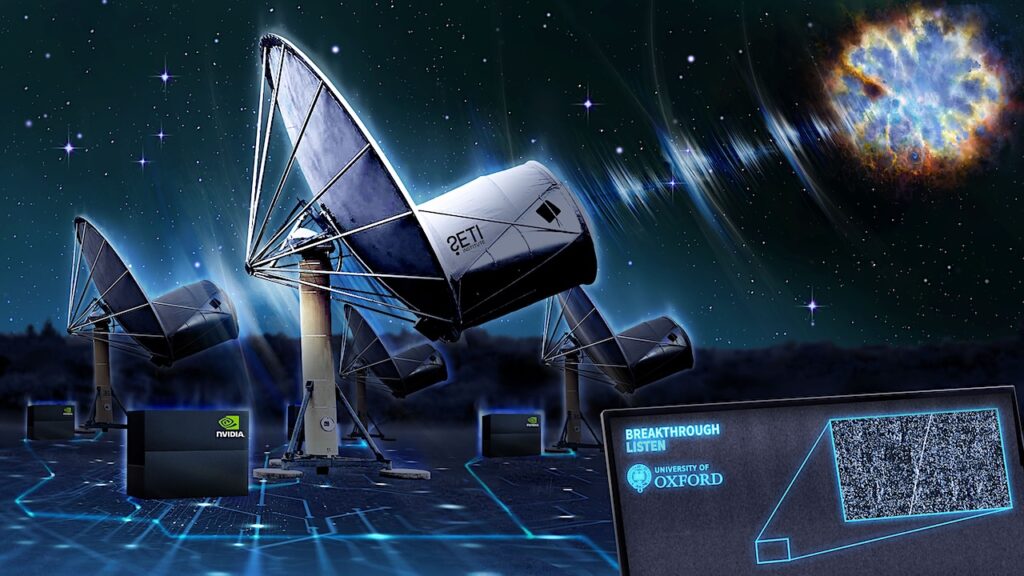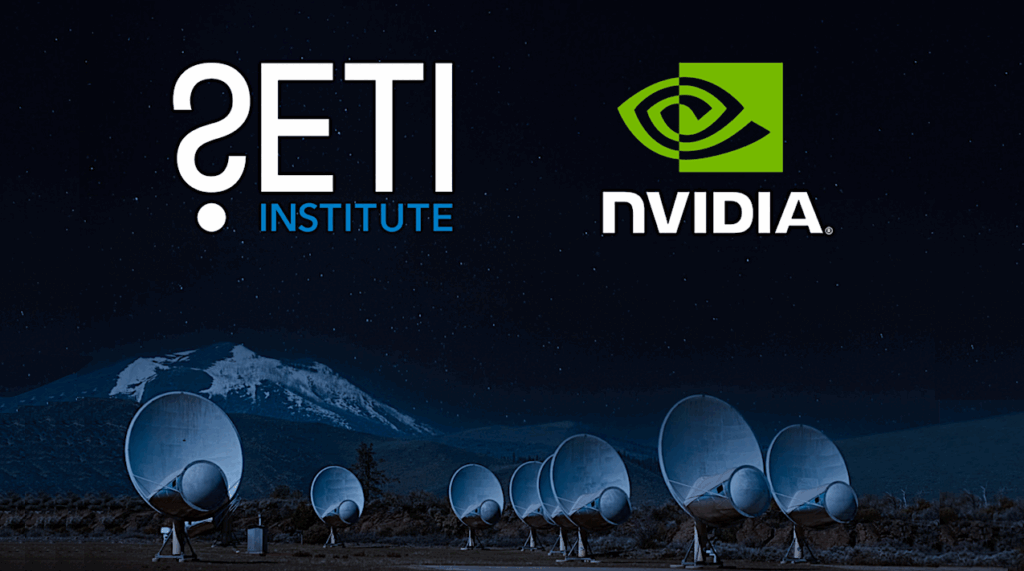Breakthrough Listen Publishes Most Comprehensive and Sensitive Search for Radio Technosignatures Ever Performed

Breakthrough Listen – the astronomical program searching for signs of intelligent life in the Universe – has submitted two publications to leading astrophysics journals, describing the analysis of its first three years of radio observations and the availability of a petabyte of radio and optical telescope data.
This represents the largest release of SETI data in the history of its field.
Listen is performing detailed observations of a sample of 1702 nearby stars (within about 160 light years from Earth) using the Green Bank Radio Telescope (GBT) in West Virginia and CSIRO’s Parkes Radio Telescope in Australia. In addition, exploration of a wide swath of our Galaxy’s disk is underway at Parkes[1], observations of a one-million-star sample will soon commence[2] at the MeerKAT telescope in South Africa, Lick Observatory’s Automated Planet Finder is being used to search for optical signals[3], and collaborations continue to grow with a number of partner facilities[4] across the globe.
The Breakthrough Listen science team at the University of California, Berkeley’s SETI Research Center (BSRC)[5] has developed a number of techniques to search the data for “technosignatures” – evidence of technology (such as transmitters or propulsion devices) built by civilizations beyond Earth. These techniques include searches for powerful signals occupying a narrow range of radio frequencies, and scans for bright lasers used for communication or propulsion, as well as new algorithms built on machine learning techniques that are being used to study unexplained astrophysical phenomena[6] in addition to the technosignature search.
Building on the results presented by the team in 2017[7] that reported on the analysis of 692 stars observed with GBT, Breakthrough Listen has now submitted a more wide-ranging and detailed analysis of 1327 nearby stars (almost 80% of Listen’s nearby star sample), observed over the last three years as part of a joint program between GBT and Parkes. With these new results, Breakthrough Listen has completed the most comprehensive and sensitive radio search for extraterrestrial intelligence (SETI) in history. Additionally, the experience gained during the first three years of the program means that Listen is poised soon to extend these results to higher frequencies, more signal types and (with the MeerKAT program) thousands of times more stars.
Searching for a needle in a haystack
The search “pipeline” scans through billions of radio channels, looking for signals that are too narrow and well-defined to result from natural processes. The vast majority of the detected radio signals are from our own human technology, but the team applies two techniques to filter out these interfering signals in search of potential “needle in a haystack” signatures of extraterrestrial intelligence. The first filter selects only narrow-band signals that are drifting in frequency, rejecting many interferers that arise in the vicinity of the telescopes, while preserving signals with a Doppler drift (change in frequency with time due to their motion relative to the telescope). The second filter removes signals that do not appear to originate from a fixed point on the sky. By performing comparison scans of regions of sky near to the star being targeted, signals not coming from the direction of the target star can be removed.
These two techniques reduce the size of the “haystack” from tens of millions of signals down to just a handful. The few remaining technosignature candidates were carefully examined, and determined to be outlying examples of human-generated radio frequency interference that survived the two cuts. Despite the lack of true technosignature detections, however, the scientific paper describing the analysis places the most stringent limits to date on the prevalence of radio-transmitting extraterrestrial civilizations in our Galactic neighborhood.
The results of this analysis are presented in a paper submitted for publication in the Astrophysical Journal, led by Breakthrough Listen Project Scientist for Parkes, Dr. Danny Price. A preprint, and associated background information and links to analysis software[8], are also available.
“This data release is a tremendous milestone for the Breakthrough Listen team,” said Dr. Price. “We scoured thousands of hours of observations of nearby stars, across billions of frequency channels. We found no evidence of artificial signals from beyond Earth, but this doesn’t mean there isn’t intelligent life out there: we may just not have looked in the right place yet, or peered deep enough to detect faint signals.”
Public data
Breakthrough Listen strives to make as much data as possible available to the public, so that the astronomical community, deep learning experts, and anyone else so inclined can download and examine the results from its observations. It is the team’s hope that the data will be used for other kinds of astronomical investigations in addition to technosignature searches, and also that those with relevant expertise can help the program develop better and faster algorithms to detect and filter potential candidate signals.
The datasets examined in the analysis paper led by Dr. Price are now publicly available through the Breakthrough Listen Open Data Archive[9] and also through a beta interface hosted by BSRC[10], which provides access to the same datasets, but with additional search options. In addition to the GBT and Parkes data described above, the archive also contains data from our observations of FRB 121102[11] (the first repeating fast radio burst detected), scans of the interstellar asteroid `Oumuamua[12], and a trove of optical data from APF. Together these amount to almost 1 petabyte of publicly-available data – the equivalent of around 1600 years of streaming audio from your favorite online music service. A description of the data formats, analysis tools, and archival system can be found in a second new paper[13] submitted for publication by the Listen team, led by Matt Lebofsky, BSRC’s Lead System Administrator.
“While we have been making smaller subsets of data public before in varying forms and contexts,” said Lebofsky, “we are excited and proud to offer this first cohesive collection along with an instruction manual, so everybody can dig in and help us search. And we’re just getting started – there’s much more to come!”
Breakthrough Listen is a scientific program searching for evidence of technological life in the Universe. It aims to survey one million nearby stars, the entire galactic plane and 100 nearby galaxies at a wide range of radio and optical bands.
The Breakthrough Initiatives are a suite of scientific and technological programs, founded by Yuri Milner, investigating life in the Universe. Along with Breakthrough Watch, they include Breakthrough Listen, the largest ever astronomical search for signs of intelligent life beyond Earth; and Breakthrough Starshot, the first significant attempt to design and develop a space probe capable of reaching another star.
Yuri Milner founded Mail.ru Group in 1999 and under his leadership it became one of Europe’s leading internet companies. He took that business public in 2010 and founded DST Global to focus on global internet investments. DST Global became one of the world’s leading technology investors and its portfolio has included some of the world’s most prominent internet companies, such as Facebook, Twitter, WhatsApp, Snapchat, Airbnb, Spotify, Alibaba, and others. Yuri lives in Silicon Valley with his family.
Yuri graduated in 1985 with an advanced degree in theoretical physics and subsequently conducted research in quantum field theory. Yuri and his wife Julia, partnered with Sergey Brin, Priscilla Chan and Mark Zuckerberg, Pony Ma, and Anne Wojcicki to fund the Breakthrough Prizes – the world’s largest scientific awards, honoring important, prim
arily recent, achievements in Fundamental Physics, Life Sciences and Mathematics. In July 2015, together with Stephen Hawking, Yuri launched the $100 million Breakthrough Listen initiative to reinvigorate the search for extraterrestrial intelligence in the Universe, and in April 2016 they launched Breakthrough Starshot – a $100 million research and engineering program seeking to develop a technology for interstellar travel.
For media inquiries: [email protected]
OR
Rubenstein Communications, Inc.
New York, New York
Janet Wootten
[email protected] / +1.212.843.8024
[1] https://breakthroughinitiatives.org/news/20
[2] https://breakthroughinitiatives.org/news/23
[3] https://doi.org/10.1088/1538-3873/aafe86
[4] e.g. https://breakthroughinitiatives.org/news/6 and https://breakthroughinitiatives.org/news/11
[5] http://seti.berkeley.edu
[6] https://breakthroughinitiatives.org/news/22
[7] https://breakthroughinitiatives.org/news/10
[8] http://seti.berkeley.edu/listen2019
[9] https://breakthroughinitiatives.org/opendatasearch
[10] http://seti.berkeley.edu/opendata
[11] https://breakthroughinitiatives.org/news/13
[12] https://breakthroughinitiatives.org/news/15
[13] Also available at http://seti.berkeley.edu/listen2019








